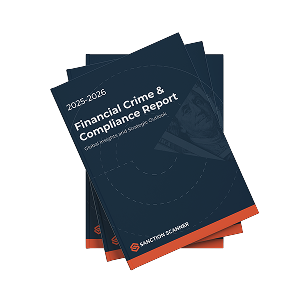Through dishonest electronic communications, wire fraud is a sneaky financial crime that can jeopardise the financial stability of a person or an organisation. The far-reaching effects of wire fraud, whether it is started by phone calls, emails, or digital platforms, emphasise how crucial it is to be vigilant and prevent it in contemporary financial transactions. This manual offers a thorough examination of the idea of wire fraud, its most prevalent manifestations, and practical defences.
What is Wire Fraud?
Wire fraud can be explained as the intentional act of misleading someone in order to obtain funds, assets, or private information via electronic means. Emails, phone conversations, text messages, and other digital communications fall under this category.
How Does It Work?
Wire fraud works by using misleading electronic communications to take advantage of people's or organisations' trust and weaknesses. The fraudster usually starts by creating a convincing plan, which may include posing as a reputable organisation like a bank, government office, or employer. To make their plan seem legitimate, they employ things like spoof websites, phoney phone calls, and phishing emails. The target may unintentionally send money, divulge private information like banking information, or allow access to private systems once they accept the message or request as authentic. The effectiveness of the deception and the victim's reaction prior to realising the fraudulent intent determine whether wire fraud is successful.
Types of Wire Fraud Schemes
There are several types of wire fraud, and they all take advantage of different weaknesses. The most common scams that people and businesses come across are listed below:
Business Email Compromise (BEC)
Scammers pose as trusted business partners or company executives in order to trick staff members into sending sensitive information or money. The FBI claims that in 2022, BEC scams cost the world more than $2.7 billion in losses. These scams are more difficult to identify because they frequently take advantage of email addresses that appear authentic and are almost exact replicas of real ones.
Vendor Impersonation
To divert legitimate payments into their accounts, scammers pose as vendors and assert that their banking information has changed. According to studies, 56% of small and medium-sized businesses have lost between $30,000 and $50,000 on average as a result of vendor impersonation attempts.
Real Estate Transaction Fraud
Buyers are the target of this kind of fraud during real estate closings. Buyers are instructed to wire money into fictitious accounts by phoney emails. Buyers are frequently unaware of real estate fraud until it is too late, and in 2022, it was responsible for nearly $400 million in reported losses in the United States.
Romance Scams
In order to trick victims into sending money under false pretences of urgency or emotion, scammers create fictitious online relationships. Individual victims of romance scams lost an average of $10,000 in 2024, with reported losses totalling over $1.3 billion.
Phishing-Enabled Bank Fraud
Phishing emails are used by cybercriminals to obtain banking credentials, allowing them to access victims' accounts without authorisation. In 2022, more than 60% of phishing attacks that were reported focused on banking information, leading to billions of dollars in illegal transactions worldwide.
Fake Invoice or Billing Scams
Fraudsters send businesses phoney invoices in the hopes that the charges will be overlooked and paid without verification. In the past five years, businesses worldwide reported losing an estimated $12 billion to these scams, with small businesses being particularly at risk.
Who Is Most at Risk of Wire Fraud?
Small and Medium-Sized Enterprises
Smaller companies are frequently the focus of wire fraud schemes. These companies lack the strong cybersecurity safeguards that larger corporations have in place. Some examples are invoicing scams, which insert fictitious payment requests into the workflow, and Business Email Compromise (BEC), where scammers pose as executives or vendors to fool staff into sending money. A lack of knowledge and resources is another reason why these companies get targeted.
Real Estate Agencies and Law Firms
Cybercriminals commonly target law firms and real estate agencies. The high-value transactions these companies handle on behalf of their clients is one reason for it. In order to misdirect funds, fraudsters take advantage of these industries by intercepting communications, changing wire transfer instructions, or posing as clients or other reliable parties. They are especially vulnerable to these kinds of attacks because they rely so heavily on email correspondence.
High-Net-Worth Individuals
They frequently target people with significant assets. Investment scams that promise large returns or specially designed phishing emails that look authentic can be given as examples. Social engineering techniques can also be used by cybercriminals.
Elderly People
IRS impersonation schemes and romance scams target older adults frequently. Fraudsters frequently use their social isolation, lack of familiarity with digital threats, or trust to coerce victims into sending money or divulging personal information. These frauds have the potential to cause both financial and emotional harm for these elderly people.
International Trade Companies
Businesses that transact internationally are especially susceptible to fraud involving fraudulent banking details or vendor impersonation. In order to evade detection, criminals frequently take advantage of the difficulties associated with international trade by pretending to be partners or suppliers and requesting payments to fictitious accounts. These scams are hard to identify because of the high volume and frequency of transactions in this industry.
What Are Wire Fraud Red Flags?
Early detection of certain warning indicators is essential for wire fraud detection. These consist of, but are not restricted to, the following:
- Unexpected Bank Detail Changes: Requests to amend payment details without prior notice.
- Urgency in Requests: Pressuring people to act right away discourages verification.
- Suspiciously Spoofed Email Addresses: These are email addresses that closely resemble domain names but differ slightly.
- Requests to Disregard Standard Procedures: Encouraging staff members to disregard security measures.
- Avoidance of Communication: Reluctance to involve others or have additional conversations about the request.
How to Protect Your Business from Wire Fraud
To reduce the risk of wire fraud, strong preventative measures must be put in place. Take into account the following tactics to protect against possible dangers:
Use Dual Authorisation
High-value wire transfers should only be approved by two distinct people. This adds a level of responsibility.
Train Staff on Fraud Awareness
Employees should receive regular training on spotting red flags, phishing attempts, and social engineering techniques.
Verify Bank Details via Phone
Always use well-known, verified phone numbers to call and confirm any changes to the vendor's payment information.
Enable Anti-Phishing Technology
Include email filtering tools that identify and stop spoof domains and phishing attempts. Run vulnerability scans on a regular basis.
Implement Fraud Detection Software
Make use of sophisticated fraud monitoring tools to examine transactions and instantly identify anomalous activity.
What to Do If You Fall Victim to Wire Fraud
To reduce financial losses, you must act quickly if wire fraud has compromised your personal or business accounts.
- Notify Your Bank: Notify your bank right away to try to reverse the transaction. Rapid response mechanisms for fraudulent transfers are offered by certain banks.
- Speak with Law Enforcement: Submit a report to the appropriate authorities. File a complaint with the FBI's Internet Crime Complaint Centre (IC3) for cases involving the United States.
- Communicate with Internal Compliance Teams: For a damage assessment, escalate the matter to the legal and compliance departments of your business.
- Keep the Evidence Safe: Keep track of all correspondence pertaining to the fraud, including call logs, invoices, and email chains.
How Sanction Scanner's Compliance Tools Assist in Wire Fraud Prevention
The use of cutting-edge compliance technologies to identify and prevent wire fraud is growing. These tools provide better protection by utilising advanced AI and machine learning algorithms.
The following are some instances of technological solutions:
- Real-time monitoring is the first tool on our list, and it helps with tracking and evaluating transactions continuously in order to spot and flag any suspicious activity right away, stopping possible fraudulent activities before they get out of hand.
- Sanction Screening is our second helpful tool, since carefully comparing transactions to international sanctions lists to make sure no money is transferred to groups that are forbidden by national or international sanctions policies is crucial.
- Performing thorough investigations on clients, vendors, or account holders to confirm their legitimacy and guarantee adherence to legal requirements prior to processing transactions is known as "counterparty name screening.”, which is another tool to help prevent wire fraud.
- Audit trails, the last item on our list, are thorough, time-stamped logs of all financial transactions that offer a transparent record to confirm the legitimacy, legality, and justification of each executed transaction.
Examples of Wire Fraud
- Real Estate: A real estate law firm lost $700,000 as a result of falling for a sophisticated business email compromise scam. By sending phoney wiring instructions that seemed to be straight from "a client," the con artists fooled the company into transferring the money to an unapproved account.
- Manufacturing: After receiving an urgent email that seemed to be from their CEO, a manufacturing company lost $250,000. The email told an employee to make a wire transfer right away and was meticulously written to resemble the executive's communication style.
- Personal: After falling victim to a romance scam, a retiree in the UK lost £60,000 of their life savings. Over the course of several months, the scammer gradually gained their trust by pretending to be a kind and considerate romantic partner they had met online.
FAQ's Blog Post
Wire fraud is a type of financial crime that involves the use of electronic communications, such as phone calls, emails, or the internet, to defraud someone of money or property.
It typically involves a scammer using deceitful tactics to convince a victim to transfer funds electronically, often posing as a trusted person or organization.
Examples include phishing emails, business email compromise (BEC), fake invoice scams, romance scams, and fraudulent investment opportunities.
Yes, wire fraud is considered a serious federal offense in many countries, including the U.S., and can result in severe penalties such as imprisonment and fines.
Be cautious with unsolicited requests for money, verify sender identities, use secure channels, and avoid clicking suspicious links or attachments.
Report it immediately to local authorities, your bank or financial institution, and cybercrime units such as the FBI’s Internet Crime Complaint Center (IC3).



